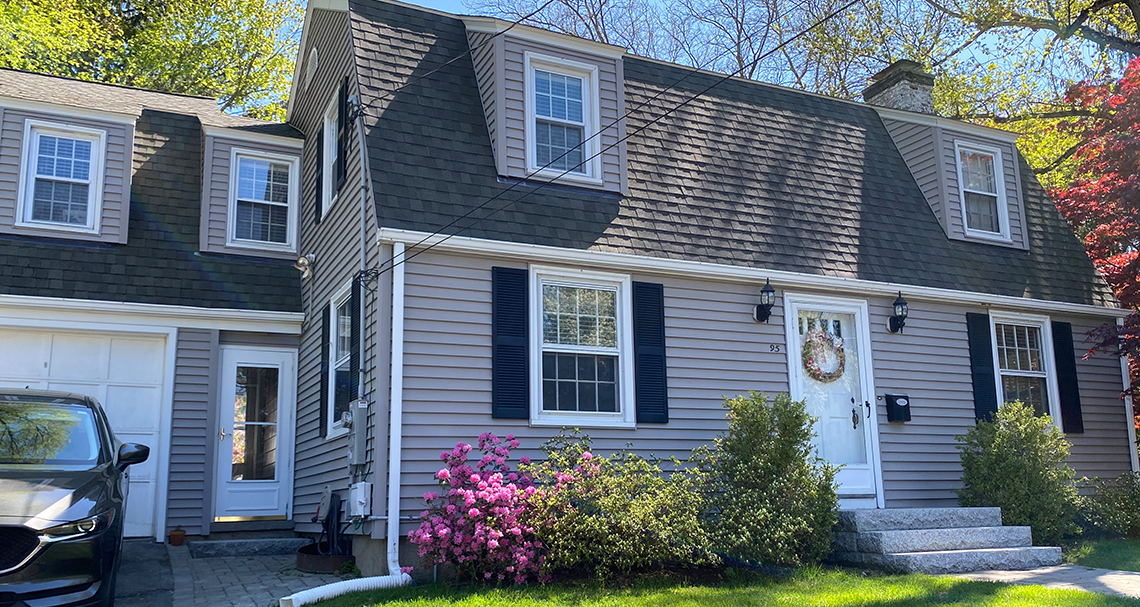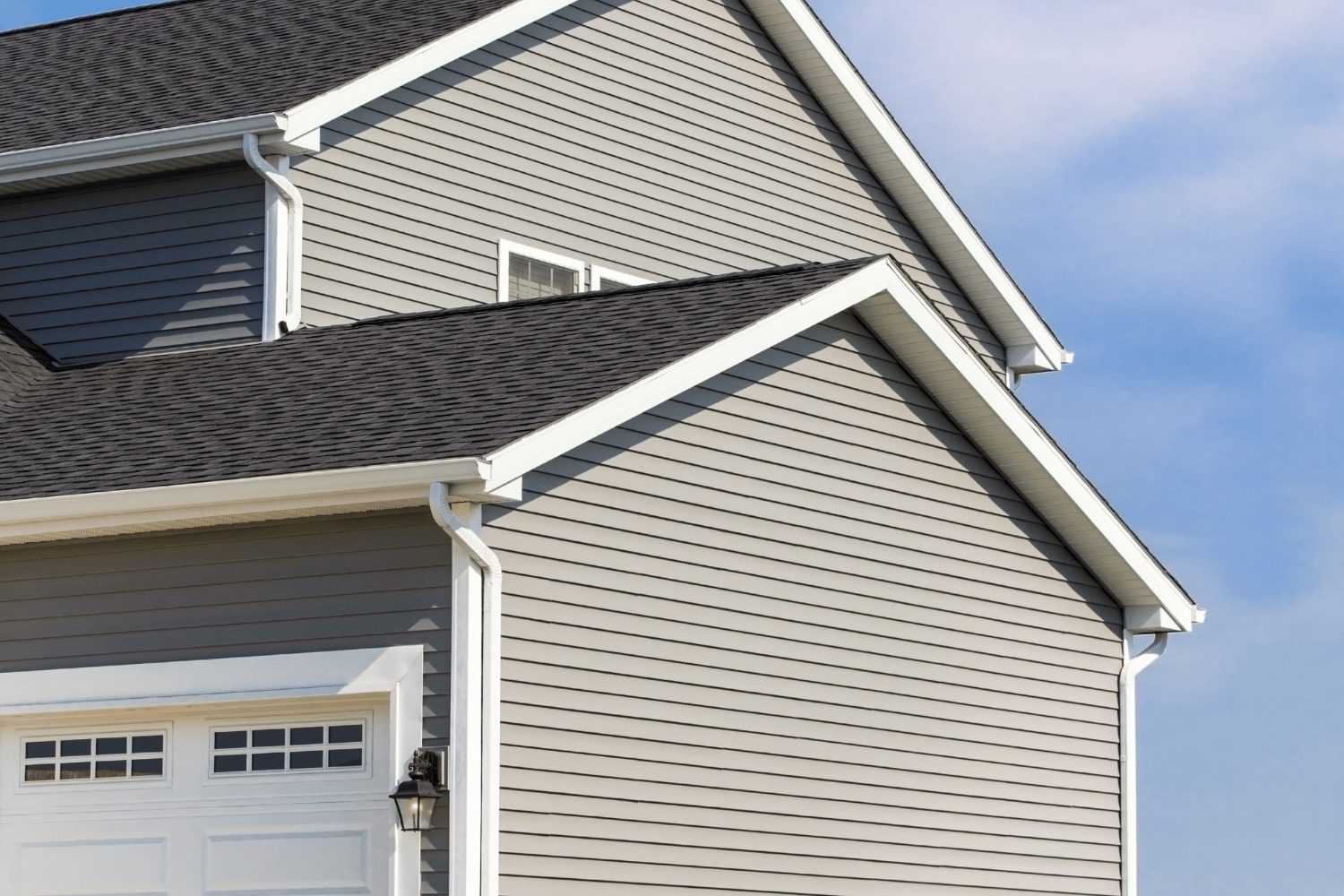The Essential Guide to the Various Sorts Of Siding and Their One-of-a-kind Benefits
In the world of home renovation, selecting the appropriate siding is an important decision that impacts both visual charm and functional performance. With so several options to take into consideration, which home siding material absolutely stands out for your specific project?
Timber House Siding
Wood home siding, a prominent selection for residential exteriors, supplies a classic visual that combines all-natural beauty with architectural honesty. This house siding product is available in various styles, including clapboard, tiles, and board-and-batten, allowing homeowners to tailor their appearance to match their design preferences. Timber house siding is generally crafted from sturdy varieties such as cedar, redwood, or want, which are understood for their strength and ability to withstand environmental stress factors.
Among the main advantages of timber house siding is its outstanding insulation residential or commercial properties, which can add to energy efficiency and reduced home heating prices. Furthermore, timber siding is biodegradable, making it an eco-friendly option when sourced sustainably. Regular upkeep, consisting of paint or staining, can lengthen its lifespan and boost its look, enabling homeowners to protect the all-natural appeal of the timber.
However, prospective disadvantages include vulnerability to pests, rot, and weather damages, requiring sufficient treatment and maintenance - morris siding contractor. In spite of these problems, when properly looked after, timber house siding can offer a resilient and beautiful option that boosts the character of a home while providing a cozy, inviting environment

Vinyl Siding
Plastic siding has actually emerged as a leading choice for homeowners seeking a low-maintenance exterior alternative that combines sturdiness and cost. This functional product is crafted from polyvinyl chloride (PVC), making it resistant to numerous weather, consisting of moisture and UV rays. Because of this, vinyl exterior siding does not warp, rot, or fade, making sure long-lasting visual allure.
One of the primary benefits of plastic house siding is its substantial variety of colors and styles, permitting house owners to attain the preferred search for their residential property without the requirement for regular repainting. Furthermore, plastic house siding is simple to mount, which can considerably reduce labor expenses throughout building and construction or remodelling jobs.
Vinyl house siding likewise contributes to energy performance. Several alternatives function insulation backing, which enhances thermal performance, assisting to preserve comfy indoor temperature levels and potentially decreasing power costs. Its smooth surface area promotes easy cleansing, requiring just routine washing with a yard tube to eliminate dirt and debris.
Fiber Concrete Exterior Siding
Fiber cement siding has actually obtained traction among home builders and property owners alike as a result of its remarkable mix of longevity and visual adaptability. Made up of a combination of sand, cellulose, and concrete fibers, this siding alternative is crafted to withstand severe weather condition problems, consisting of high winds, hefty rain, and temperature level fluctuations, making it a lasting option for residential exteriors.
One of the main benefits of fiber concrete house siding is its resistance to parasites, such as termites, and its non-combustible nature, offering improved fire security. morris siding contractor. Additionally, it is readily available in a broad array of shades, appearances, and styles, enabling homeowners to accomplish their preferred visual without compromising efficiency
An additional benefit is its reduced maintenance needs; fiber concrete home siding usually needs painting or staining every 5-10 years, which is much less regular than various other products. Its long life contributes to a reduced total cost of ownership, as it minimizes the demand for frequent repair work or replacements.
Ultimately, fiber concrete exterior siding represents a superb investment for those seeking a durable, eye-catching, and versatile outside option, combining both kind and function to improve the home's aesthetic allure.
Metal Home Siding
The appeal of metal home siding depends on its robust durability and contemporary aesthetic appeal, making it a popular choice for modern design. Available in materials such as aluminum and steel, metal siding uses an array of surfaces and colors, allowing home owners to achieve a tailored appearance company website that matches their layout vision.

Power effectiveness is another significant benefit, as many steel siding products are developed with insulation choices that aid control indoor temperature levels. This can result in decreased power expenses in time. In addition, metal home siding is usually recyclable, making it an eco-friendly option for sustainability-minded home owners.
The setup process for metal siding can be fairly uncomplicated, resulting in a quicker turn-around time for construction jobs. On the whole, steel siding incorporates capability and design, making it a functional option for those looking for a aesthetically attractive and enduring exterior finish.
Brick and Stone Siding
Brick and stone house siding stands out as a classic selection that boosts the aesthetic charm of any type of home. Recognized for their toughness and reduced upkeep, these products offer a remarkable return on investment while raising the home's aesthetic allure. Readily available in numerous shades, appearances, and patterns, block and rock can be tailored to fit diverse architectural styles, from typical to modern-day.
One of the primary advantages of brick and stone home siding is their energy efficiency. Both materials have all-natural shielding homes that aid regulate interior temperatures, YOURURL.com possibly lowering heating & cooling prices. Additionally, they offer premium fire resistance contrasted to various other house siding alternatives, contributing to boosted safety and security.
Another benefit is their longevity. Brick and stone can last for decades, often requiring very little maintenance beyond occasional cleaning. Unlike timber house siding, they are impervious to bugs and rot, ensuring a long-lasting exterior that stands up to the aspects.
Conclusion
In summary, the choice of home siding substantially impacts a home's aesthetic charm, energy efficiency, and maintenance requirements. Each kind of siding-- whether timber, plastic, fiber brick, concrete, or steel and stone-- supplies distinct advantages customized to different property owner preferences and ecological problems. Understanding these options allows informed decisions that enhance both the toughness and aesthetic beauty of residential outsides. Eventually, picking the best house siding is essential for achieving a balance between capability and design in property architecture.
One of the main benefits of timber home siding is its excellent insulation homes, which can contribute to power effectiveness and lower heating costs. In addition, timber home siding is eco-friendly, making it an ecologically friendly alternative when sourced sustainably.One of the key benefits of metal exterior siding is its resistance to numerous ecological variables.Power performance is an additional considerable benefit, as many steel home siding products are created with insulation choices that assist regulate indoor temperatures. Each kind of exterior siding-- whether timber, vinyl, fiber steel, Bonuses concrete, or brick and stone-- provides one-of-a-kind benefits tailored to numerous property owner preferences and environmental conditions.